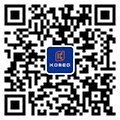The car lights can provide lighting for drivers, passengers and traffic administrators at night or when the vision is poor, and play the role of reminding and warning other vehicles and pedestrians. Previously, many lamps did not undergo a series of reliability tests before getting on the vehicle. With the passage of time, the phenomenon of rubber cracking of automobile headlights due to vibration increases. In order to improve the quality and safety of existing products, it is very important to carry out environmental reliability test during the production and manufacturing process of automobile headlights.

First. Vehicle lamp detection coverage
1. Front fog lamp, headlamp, front turn signal lamp, front parking lamp, front clearance lamp, front reflector;
2. Rear fog lamp, rear turn signal lamp, rear reflector, rear clearance lamp, rear parking lamp, rear brake lamp, high-mounted brake lamp, reversing lamp, license plate lamp;
3. Side marker lamps, side turn signal lamps, side reflectors, side parking lamps, daytime running lamps, corner lamps, retro-reflective materials, and reflective signs.
4. Triangle warning sign, headlamp washer, rear sign board for low-speed vehicles and heavy and long vehicles, and retro-reflector sign for heavy and long vehicles.
Second. Test method for environmental reliability of automobile lamps
According to the relevant national document GB10485-2007 Environmental Durability of External Lighting and Light Signaling Devices for Road Vehicles, the basic environmental tests required for automotive lamps are as follows:

Thermal cycle test
The thermal cycle test of automobile lamps usually includes two types: high and low temperature cycle test and temperature and humidity cycle test. The former mainly examines the resistance of the vehicle lamp to the alternating cycle environment of high temperature and low temperature, while the latter mainly examines the resistance of the vehicle lamp to the alternating cycle environment of high temperature, high humidity and low temperature.
Generally speaking, the high and low temperature cycle test specifies the high and low temperature values of the cycle. The holding time under the high and low temperature values and the rate of temperature change during the high and low temperature conversion do not require the test ambient humidity.
Unlike the high and low temperature cycle test, the temperature and humidity cycle test also specifies the humidity, which is usually specified in the high temperature part. Humidity may always be in a constant state, or it may change with temperature. Generally speaking, there is no humidity regulation for the low temperature part.
Thermal shock and thermal deformation test
For automobile lamps, the purpose of thermal shock test is to investigate the resistance of lamps to the environment with drastic temperature changes. During the test, the lamp shall be placed in a high temperature environment box and allowed to stand for the specified time. After the rest, take out and observe the structural state of the plastic part of the lamp to see if it is deformed.
The test method is to power on the lamp and operate normally for a period of time, then immediately power off and quickly immerse the lamp in constant temperature water until the specified time. After soaking, take out the lamp and observe whether there are cracks, blisters and other phenomena on its appearance and whether the lamp function is normal.
Dust and water proof test
The purpose of the dust prevention test is to investigate the ability of the lamp shell to prevent dust from entering and protect the interior of the lamp from dust intrusion. In the GB/T 10485-2007 standard, a special waterproof test is specified for the lamp. The test method is to spray water on the sample with a spray pipe with the center line of the spray pipe downward at an angle of about 45 ° to the vertical line of the horizontal turntable. The precipitation speed should reach (2.5~4.1) mm/min, the rotation speed of the turntable should be about 4 r/min, and the water should be sprayed continuously for 12 hours.
The simulated dust used in the test includes talc powder, Arizona dust A2, dust mixed by 50% Portland cement and 50% coal ash, etc. General requirements 1m ³ 2 kg of simulated dust shall be placed in the space. There are both continuous blowing and blowing for 6s and stopping for 15min, while the former is usually tested for 8h and the latter for 5h.

Salt spray test
To investigate the ability of metal parts on the lamp to resist salt spray corrosion, the neutral salt spray test is generally carried out on the lamp.
Generally, sodium chloride solution is used, its mass concentration value is about 5%, and its pH value is about 6.5 to 7.2, which is neutral. Spray+drying method is often used in the test, that is, after continuous spray for a period of time, stop spray and let the lamp stand and dry. The lamp shall be tested continuously for dozens or hundreds of hours in this cycle mode, and the corrosion condition of its metal parts shall be observed after taking out the lamp.
Random vibration test
The purpose of random vibration test of automobile lamp is to investigate the ability of lamp to resist durable vibration, and simulate the vibration environment of automobile lamp when driving on the road.
The main purpose of sine vibration test is to study the natural frequency of the lamp and understand some characteristics of the lamp itself. The random vibration is different from that. The random vibration is more important to investigate the ability of the structure of the vehicle lamp to resist the vibration environment, which is closer to the actual use state.
Chemical reagent resistance test
The purpose of chemical reagent resistance test for automobile lamps is to investigate the ability of lamps to resist the corrosion of various chemical reagents. Common chemical reagents include lubricating oil, fuel oil, cleaning fluid, etc. During the test, apply the specified chemical reagent to the lamp, and observe the change of the lamp surface after standing for the specified time at normal temperature.
Light source irradiation test
For automotive lamps, the light source irradiation test usually refers to the xenon lamp test. Because most of the lamps are outdoor products, the filter commonly used for xenon lamp test is daylight filter. Other conditions such as irradiation intensity, box temperature, blackboard or black label temperature, humidity, lighting mode, dark mode and so on vary according to different products. After the test, the color difference, gray scale rating, glossiness and other aspects of the lamp will be tested to verify the light aging resistance of the lamp.







